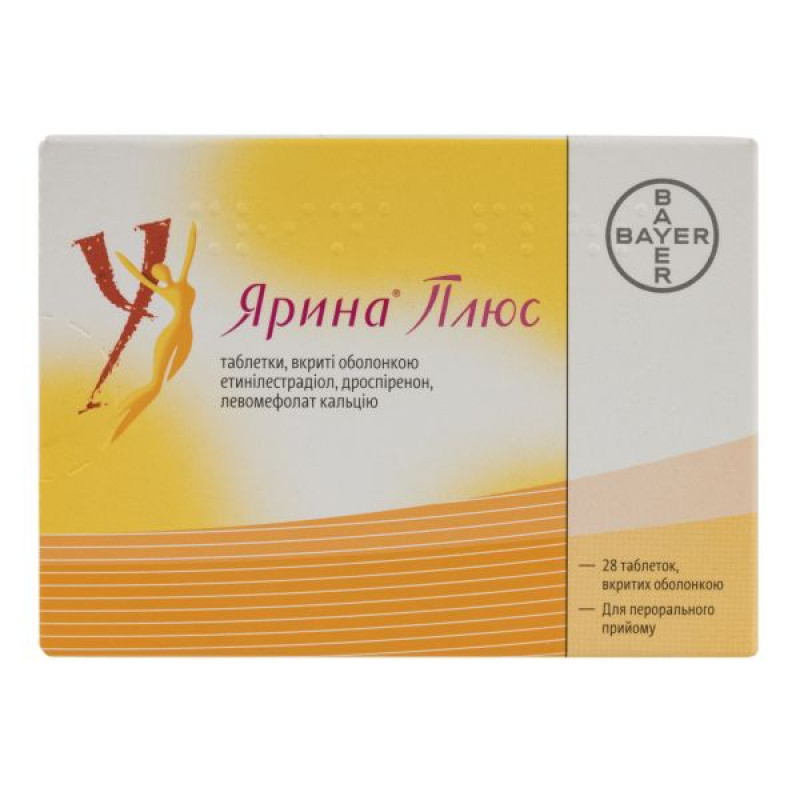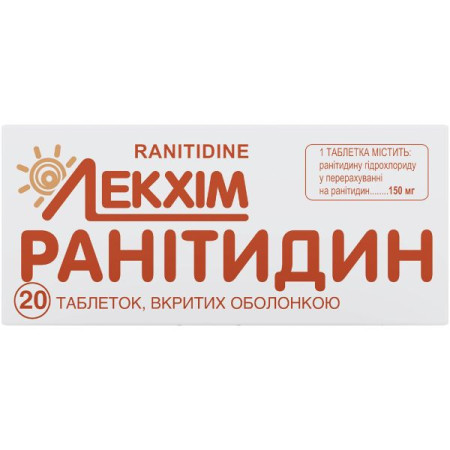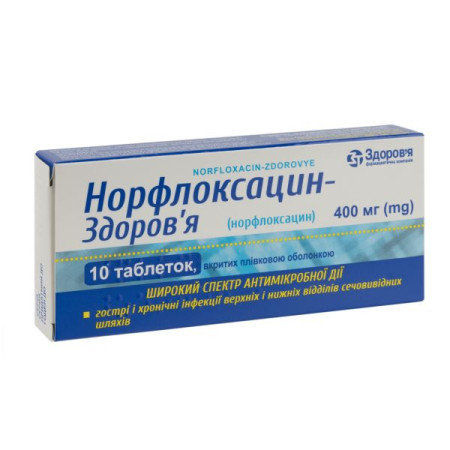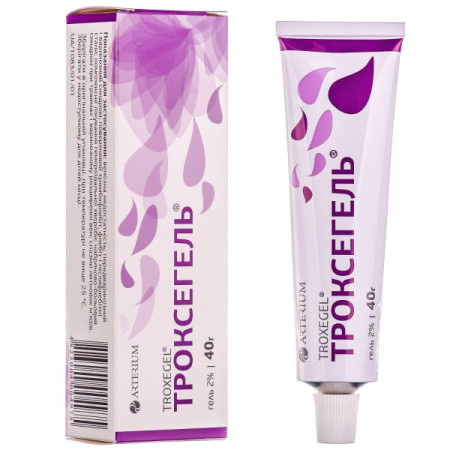Yarina Plus film-coated tablets blister pack No. 28
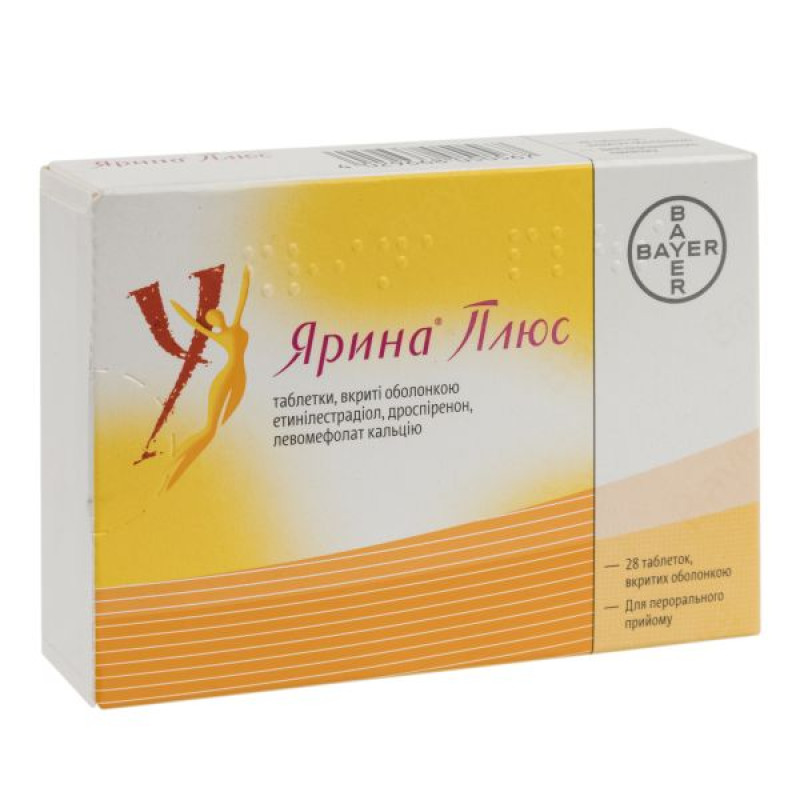
Instructions for use Yarina Plus film-coated tablets blister pack No. 28
Composition
active ingredients: ethinylestradiol, drospirenone, calcium levomefolate;
1 pack contains 28 film-coated tablets (21 orange tablets and 7 light orange tablets);
1 orange tablet contains ethinylestradiol 0.03 mg, drospirenone 3 mg and calcium levomefolate 0.451 mg;
excipients: lactose monohydrate, microcrystalline cellulose, sodium carboxymethylcellulose, hydroxypropylcellulose, magnesium stearate, hypromellose, macrogol 6000, talc, titanium dioxide (E 171), yellow iron oxide (E 172), red iron oxide (E 172);
1 light orange tablet contains 0.451 mg of calcium levomefolate;
excipients: lactose monohydrate, microcrystalline cellulose, sodium carboxymethylcellulose, hydroxypropylcellulose, magnesium stearate, hypromellose, macrogol 6000, talc, titanium dioxide (E 171), yellow iron oxide (E 172), red iron oxide (E 172).
Dosage form
Film-coated tablets.
Main physicochemical properties: film-coated tablets containing hormones, round, biconvex, orange in color, with “Y+” embossed on one side in a regular hexagon; tablets containing only calcium levomefolate, film-coated, round, biconvex, light orange in color, with “M+” embossed on one side in a regular hexagon.
Pharmacotherapeutic group
Sex gland hormones and drugs used in genital pathology. Hormonal contraceptives for systemic use.
ATX code G03A A12.
Pharmacological properties
Pharmacodynamics
Mechanism of action
Combined oral contraceptives (COCs) reduce the risk of pregnancy mainly by inhibiting ovulation. Other possible mechanisms include changes in the nature of cervical mucus, which makes it difficult for sperm to penetrate, and changes in the endometrium, which reduces the likelihood of implantation.
Pharmacodynamic properties
Drospirenone is an analogue of spironolactone, which has antimineralocorticoid and antiandrogenic properties. The estrogenic component of the drug Yarina Plus is ethinyl estradiol.
Contraceptive effect
No specific studies of the pharmacodynamic properties of Yarina Plus have been conducted.
Folate supplement
Two studies examined the effect of Yarina Plus on plasma and red blood cell folate levels. A randomized, double-blind, active-controlled, parallel-group study compared plasma and red blood cell folate levels in women (patients) from the United States during 24 weeks of treatment with 3 mg drospirenone/0.02 mg ethinyl estradiol (Jazz) + 0.451 mg calcium levomefolate and during treatment with Jazz alone. The pharmacodynamic effects on plasma and erythrocyte folate levels and the profile of circulating folate metabolites were assessed during 24 weeks of treatment with 0.451 mg calcium levomefolate or 0.4 mg folic acid (equimolar dose of 0.451 mg calcium levomefolate) in combination with 3 mg drospirenone/0.03 mg ethinylestradiol (Yarina) followed by 20 weeks of unmasked use of Yarina alone (elimination phase).
Pharmacokinetics
The drugs Yarina Plus and Yarina are bioequivalent with respect to drospirenone and ethinyl estradiol.
The absolute bioavailability of drospirenone when taking a tablet containing only drospirenone is about 76%. The absolute bioavailability of ethinylestradiol is about 40%, which is the result of presystemic conjugation and the first-pass effect. The absolute bioavailability of the drug Yarina Plus, which contains a combination of drospirenone and ethinylestradiol stabilized with betadex clathrate (molecular complex), has not been studied. Ethinylestradiol has the same bioavailability when used in the form of a complex with betadex clathrate and when taken as a free steroid. Serum concentrations of drospirenone and ethinylestradiol reach a maximum level 1-2 hours after taking the drug Yarina Plus.
The pharmacokinetics of drospirenone after single doses of 1 to 10 mg is dose-dependent. With daily use of the drug "Yarina", the equilibrium concentration of drospirenone was reached after 8 days. An almost 2-3-fold increase in Cmax and AUC (0-24 hours) in serum drospirenone was observed after multiple use of the drug "Yarina" (see Table 1).
For ethinylestradiol, steady-state conditions were observed during the second half of the treatment course. With daily use of Yarina, serum Cmax and AUC (0-24 hours) of ethinylestradiol increased by almost 1.5-2 times (see Table 1).
Steady-state conditions for total plasma folate levels after administration of 0.451 mg of calcium levomefolate are reached in approximately 8-16 weeks, depending on baseline levels. Steady-state concentrations of calcium levomefolate in erythrocytes are reached somewhat later, due to the longer life cycle of erythrocytes, which is 120 days.
Table 1. Pharmacokinetic parameters of the drug "Yarina®" (3 mg of drospirenone and 0.03 mg of ethinyl estradiol)
Drospirenone Average values (%) | |||||
| Course/day | Number of patients | Cmax (ng/ml) | Tmax (hours) | AUC(0-24h) (ng*h/ml) | T1/2 (hours) |
| 1/1 | 12 | 36.9 (13) | 1.7 (47) | 288 (25) | Not applicable |
| 1/21 | 12 | 87.5 (59) | 1.7 (47) | 827 (23) | 30.9 (44) |
| 6/21 | 12 | 84.2 (19) | 1.8 (19) | 930 (19) | 32.5 (38) |
| 9/21 | 12 | 81.3 (19) | 1.6 (38) | 957 (23) | 31.4 (39) |
| 13/21 | 12 | 78.7 (18) | 1.6 (26) | 968 (24) | 31.1 (36) |
Drospirenone Average values (%) | |||||
| Course/day | Number of patients | Cmax (ng/ml) | Tmax (hours) | AUC(0-24h) (ng*h/ml) | T1/2 (hours) |
| 1/1 | 11 | 53.5 (43) | 1.9 (45) | 280 (87) | Not applicable |
| 1/21 | 11 | 92.1 (35) | 1.5 (40) | 461 (94) | Not applicable |
| 6/21 | 11 | 99.1 (45) | 1.5 (47) | 346 (74) | Not applicable |
| 9/21 | 11 | 87 (43) | 1.5 (42) | 485 (92) | Not applicable |
| 13/21 | 10 | 90.5 (45) | 1.6 (38) | 469 (83) | Not applicable |
The impact of food
The rate of absorption of drospirenone and ethinylestradiol after a single dose of a drug similar to Yasmin Plus was lower when taken after a meal (high in fat), with the mean serum concentration (Cmax) of both substances decreasing by almost 40%. However, the extent of absorption of drospirenone remained unchanged. In contrast, the extent of absorption of ethinylestradiol decreased by almost 20% when taken after a meal.
The effect of food on the absorption of calcium levomefolate when using the drug Yarina Plus has not been studied.
Distribution
The decline in serum concentrations of drospirenone and ethinylestradiol occurs in two stages. The apparent volume of distribution of drospirenone is about 4 l/kg and that of ethinylestradiol is about
4-5 l/kg.
Drospirenone does not bind to sex hormone binding globulin (SHBG) or cortisol binding globulin (CBG), but binding to other serum proteins is approximately 97%. After repeated administration for more than 3 courses, no changes in the free fraction (based on trough concentrations) were observed. Ethinylestradiol is reported to bind actively but nonspecifically to serum albumin (approximately 98.5%) and to stimulate an increase in serum concentrations of both SHBG and CBG. This effect on SHBG and CBG, due to the action of ethinylestradiol, was not altered by changing drospirenone doses in the range of 2-3 mg.
Biphasic folate kinetics have been reported, with rapid and slow turnover. Rapid turnover, which probably reflects newly absorbed folate, is consistent with a terminal half-life of approximately 4 to 5 hours after a single oral dose of 0.451 mg calcium levomefolate. For slow turnover, which reflects the metabolism of folate polyglutamate, the average retention time is 100 days or more.
Metabolism
The two main metabolites of drospirenone detected in human plasma are the acid form of drospirenone, which is formed by opening of the lactone ring, and 4,5-dihydro-drospirenone-3-sulfate, which is the result of reduction and subsequent sulfonation. These metabolites have been shown to be pharmacologically inactive. Drospirenone also undergoes oxidative metabolism by CYP3A4.
Ethinylestradiol has been reported to undergo extensive first-pass metabolism in the intestine and liver. Metabolism of ethinylestradiol and its oxidative metabolites occurs primarily by conjugation with glucuronide or sulfate. CYP3A4 in the liver is responsible for 2-hydroxylation, which is the main oxidation reaction. The 2-hydroxy metabolite undergoes further transformation by methylation and glucuronidation before being excreted in the urine and feces.
L-5-methyl-THF is the predominant folic acid compound in the circulatory system, transported under physiological conditions and during the use of folic acid and calcium levomefolate.
Breeding
The terminal half-life in the distribution phase of ethinylestradiol has been reported to be approximately 24 hours. Ethinylestradiol is not excreted unchanged. Ethinylestradiol is excreted in the urine and feces as glucuronide and sulfate conjugates and undergoes enterohepatic circulation.
L-5-methyl-THF is excreted from the body in the urine in the form of unchanged folates and catabolic products and in the feces in the process of biphasic kinetics.
Use in special patient groups
Use in children. The safety and efficacy of Yarina Plus have been established in women of reproductive age. It is expected that the drug will show similar efficacy in postpubertal adolescents up to 18 years of age and in patients aged 18 years and older. This drug should not be prescribed before the onset of menstruation.
Use in the elderly. The use of Yarina Plus in postmenopausal women has not been studied; the drug is not prescribed to patients in this group.
Racial differences: No clinically significant differences in the pharmacokinetic properties of drospirenone or ethinyl estradiol were observed in Japanese and Caucasian women (aged 25-35 years) when a daily dose of 3 mg drospirenone/0.02 mg ethinyl estradiol was administered for 21 days. Specific studies on the characteristics of other ethnic groups have not been conducted.
Renal impairment. Yarina Plus is contraindicated for use in patients with renal impairment.
The effect of renal impairment on the pharmacokinetics of drospirenone (3 mg daily for 14 days) and the effect of drospirenone on serum potassium concentrations were studied in three separate groups of women (n = 28, ages 30-65). All subjects were on a low-potassium diet. Seven subjects continued to take potassium-sparing medications for their underlying disease during the study. On day 14 of drospirenone therapy (steady state), serum drospirenone concentrations in the group with creatinine clearance 50-79 mL/min were similar to those in the group with creatinine clearance ≥ 80 mL/min. In subjects with creatinine clearance 30-49 mL/min, serum drospirenone concentrations were on average 37% higher than in control subjects. No clinically significant effect on serum potassium was observed with drospirenone treatment. Although hyperkalemia was not observed in the study, in 5 of 7 subjects who continued to take potassium-sparing drugs during the study, the mean serum potassium concentration increased to 0.33 mEq/L (see sections 4.3 and 4.4).
Liver dysfunction. Yarina Plus is contraindicated for use in patients with liver disease.
The average exposure to drospirenone in women with moderate hepatic impairment is almost three times higher than in women with normal hepatic function. Yarina Plus has not been studied in women with severe hepatic impairment (see sections "Contraindications" and "Special warnings and precautions for use").
Drug interaction
For more detailed information on interactions with hormonal contraceptives or possible enzyme alterations, please refer to the prescribing information for all medications administered concurrently with this medication.
The effect of other drugs on COCs.
Substances that reduce the effectiveness of COCs. Drugs or herbal preparations that induce certain enzymes, including CYP3A4, may reduce the effectiveness of COCs or increase breakthrough bleeding.
Substances that increase the plasma concentration of COCs. With the simultaneous use of atorvastatin and certain COCs containing ethinyl estradiol, an increase in the AUC of ethinyl estradiol by almost 20% is observed. Ascorbic acid and acetaminophen may lead to an increase in the plasma concentration of ethinyl estradiol, probably due to inhibition of conjugation. In a clinical drug interaction study conducted in 20 premenopausal women, once-daily administration of 3 mg drospirenone and 0.02 mg ethinyl estradiol tablets with the potent CYP3A4 inhibitor ketoconazole 200 mg twice daily for 10 days resulted in a 2.68-fold (90% CI: 2.44, 2.95) and 1.4-fold (90% CI: 1.31, 1.49) increase in AUC (0-24) of drospirenone and ethinyl estradiol, respectively. Cmax increased by 1.97-fold (90% CI: 1.79, 2.17) and 1.39-fold (90% CI: 1.28, 1.52) for drospirenone and ethinyl estradiol, respectively. Although no clinically relevant effects on safety or laboratory parameters, including serum potassium, were observed, it should be noted that subjects were only studied for 10 days in this study. The clinical consequences of taking a drospirenone-containing COC concomitantly with continuous use of a CYP3A4/5 inhibitor are unknown (see section 4.4).
Antibiotics: There have been reports of pregnancy occurring during the use of hormonal contraceptives and antibiotics, but clinical pharmacokinetic studies have not shown a consistent effect of antibiotics on the plasma concentration of synthetic steroids.
Effect of COCs on other drugs
COCs containing ethinylestradiol may inhibit the metabolism of other drugs. COCs have been shown to significantly reduce the plasma concentration of lamotrigine, presumably by inducing lamotrigine glucuronidation. This may result in reduced seizure control and may require adjustment of the lamotrigine dose. For more detailed information on interactions with COCs or possible enzyme alterations, consult the prescribing information for all drugs administered concomitantly with this drug.
In vitro, ethinylestradiol is a reversible inhibitor of CYP2C19, CYP1A1 and CYP1A2 isoenzymes and an irreversible inhibitor of CYP3A4/5, CYP2C8 and CYP2J2 isoenzymes. The metabolism of drospirenone and the potential effect of drospirenone on hepatic CYP enzymes have been studied in in vitro and in vivo studies. In two in vitro studies, drospirenone had no effect on the metabolism of model substrates CYP1A2 and CYP2D6, but inhibited the metabolism of model substrates CYP1A1, CYP2C9, CYP2C19 and CYP2A4, with CYP2C19 being the most sensitive enzyme. The potential effect of drospirenone on the activity of the CYP2C19 isoenzyme was studied in a clinical pharmacokinetic study using omeprazole as a marker substrate. In a study of 24 postmenopausal women (12 women with the homozygous (wild-type) CYP2C19 genotype and 12 women with the heterozygous CYP2C19 genotype), daily oral administration of drospirenone at a dose of 3 mg for 14 days had no effect on the clearance of omeprazole (40 mg, single oral dose) and 5-hydroxyomeprazole formed by CYP2C19. In addition, no significant effect of drospirenone on the systemic clearance of omeprazole sulfone, a metabolite formed by CYP3A4, was observed. These results indicate that drospirenone does not inhibit CYP2C19 and CYP3A4 in vivo.
Two additional clinical drug interaction studies were conducted using simvastatin and midazolam as marker substrates for CYP3A4, each in 24 healthy postmenopausal women. The results of these studies showed that drospirenone at steady-state concentrations achieved after administration of 3 mg/day had no effect on the pharmacokinetics of CYP3A4 substrates.
Women receiving thyroid hormone replacement therapy may require higher doses of thyroid hormone because the serum concentration of thyroid hormone-binding globulin increases with COC use.
Interaction with drugs that may increase serum potassium levels. In women taking Yarina Plus simultaneously with other drugs that may increase serum potassium levels, there is a possibility of an increase in serum potassium concentration (see section "Special warnings and precautions for use").
A drug interaction study was conducted comparing drospirenone 3 mg/estradiol 1 mg and placebo in 24 postmenopausal women with moderate hypertension who were taking enalapril maleate 10 mg twice daily. Potassium levels were measured in all subjects every other day for 2 weeks. The mean serum potassium concentration in the drospirenone/estradiol group was 0.22 mEq/L higher than the placebo group at baseline. In addition, serum potassium levels were measured at separate time points over a 24-hour period at baseline and on day 14. At day 14, the ratio between Cmax and AUC of serum potassium in the drospirenone/estradiol group and the placebo group was 0.955 (90% CI: 0.914, 0.999) and 1.010 (90% CI: 0.944, 1.08), respectively. No patient in either treatment group developed hyperkalemia (serum potassium > 5.5 mEq/L).
Effects of folates on other drugs: Folates, such as folic acid and calcium levomefolate, may alter the pharmacokinetic or pharmacodynamic properties of certain antifolates (e.g., antiepileptics, methotrexate).
Effects of other drugs on folate: Certain drugs (methotrexate, sulfasalazine, cholestyramine, antiepileptic drugs) have been reported to cause a decrease in folate levels.
In a 24-month carcinogenicity study in animals, oral administration of 10 mg/kg/day of drospirenone or 1+0.01, 3+0.03 and 10+0.1 mg/kg/day of drospirenone and ethinyl estradiol, which was 0.1-2 times the exposure (AUC of drospirenone) in women receiving contraceptives, an increase in the incidence of Gardermoa carcinoma was identified in the group receiving monotherapy with high doses of drospirenone. In a similar study in another animal species, oral administration of 10 mg/kg/day of drospirenone or 0.3+0.003, 3+0.03 and 10+0.1 mg/kg/day of drospirenone and ethinylestradiol, which was 0.8-10 times the exposure in women receiving contraceptives, increased incidence of benign and total (benign and malignant) adrenal pheochromocytomas in the group receiving high doses of drospirenone monotherapy. In vivo and in vitro mutagenicity studies of drospirenone showed no evidence of mutagenic activity.
Long-term animal studies to determine the carcinogenic potential of levomefolate have not been conducted. Mutagenicity studies of levomefolate conducted in vivo and in vitro have not revealed any evidence of mutagenic activity.
Indication
Oral contraception.
The drug Yarina Plus is intended for use by women to prevent pregnancy.
Ensuring folate status.
The drug Yarina Plus is prescribed to women who have chosen oral contraception as a method of preventing pregnancy, to increase folate levels in order to reduce the risk of neural tube defects.
Contraindication
The drug Yarina® Plus should not be prescribed to women if they have at least one of the following conditions or diseases.
Impaired kidney function. Adrenal insufficiency. High risk of arterial or venous thrombosis. This category includes, in particular, women who:
smoke and are over 35 years of age (see section "Peculiarities of use");
have deep vein thrombosis or pulmonary embolism (PE), including a history (see section "Special precautions for use");
have cerebrovascular disease (see section "Special instructions for use");
patients with ischemic heart disease (see section "Special instructions for use");
have thrombogenic heart valve defects or thrombogenic heart rhythm disorders (e.g. subacute bacterial endocarditis with valve damage or atrial fibrillation (see section "Special warnings and precautions for use"));
patients with hereditary or acquired hypercoagulopathy (see section "Special instructions for use");
patients with uncontrolled arterial hypertension (see section "Special precautions for use");
patients with diabetes mellitus with vascular complications (see section "Special instructions for use");
suffer from headaches with focal neurological symptoms or migraines with or without aura and are over 35 years of age (see section "Special instructions").
Abnormal uterine bleeding of unknown etiology (see section "Special warnings and precautions for use").
Breast cancer or other cancers sensitive to estrogens or progestins, including a history (see section "Special warnings and precautions for use").
Liver tumors, benign or malignant, or liver disease (see section "Special instructions", "Method of administration and dosage").
Pregnancy (due to the lack of need for COC use during pregnancy) (see section "Special warnings and precautions for use", "Use during pregnancy or breastfeeding").
Use of the combination of medicines for the treatment of hepatitis C containing ombitasvir/paritaprevir/ritonavir with or without the addition of dasabuvir due to the potential for ALT elevations (see sections “Special warnings and precautions for use” and “Interaction with other medicinal products and other types of interactions”).
Interaction with other medicinal products and other types of interactions
For more detailed information on interactions with hormonal contraceptives or possible enzymatic alterations, please refer to the prescribing information for all medications prescribed concomitantly with this medicinal product.
Effects of other drugs on COCs
Substances that reduce the effectiveness of COCs
Drugs and herbal preparations that induce certain enzymes, including cytochrome P450 3A4 (CYP3A4), may reduce the effectiveness of COCs or increase breakthrough bleeding. Drugs that may reduce the effectiveness of hormonal contraceptives include: phenytoin, barbiturates, carbamazepine, bosentan, felbamate, griseofulvin, oxcarbazepine, rifampin, topiramate and drugs containing St. John's wort. Interactions between oral contraceptives and other drugs may lead to breakthrough bleeding and/or loss of contraceptive efficacy. When treating with enzyme-inducing drugs, an alternative or additional method of contraception should be used during the entire period of treatment with the drug and for 28 days after stopping its use to ensure complete contraception.
Concomitant use of atorvastatin and certain COCs containing ethinyl estradiol has been associated with an increase in ethinyl estradiol AUC of approximately 20%. Ascorbic acid and acetaminophen may increase ethinyl estradiol plasma concentrations, presumably by inhibiting conjugation.
Concomitant use of moderate or strong CYP3A4 inhibitors, including azole antifungals (ketoconazole, itraconazole, voriconazole, fluconazole), verapamil, macrolides (e.g. clarithromycin, erythromycin), diltiazem and grapefruit juice, may increase plasma concentrations of estrogen or progestin or both. In a clinical drug interaction study in premenopausal women, co-administration of a once-daily formulation of 3 mg drospirenone/0.02 mg ethinyl estradiol with the potent CYP3A4 inhibitor ketoconazole 200 mg twice daily for 10 days resulted in a modest increase in systemic exposure to drospirenone. Ethinyl estradiol exposure was slightly increased (see sections 4.4 and 5.1).
Human immunodeficiency virus (HIV)/hepatitis C virus (HCV) protease inhibitors and non-nucleoside reverse transcriptase inhibitors
In some cases, significant changes (increase or decrease) in plasma concentrations of estrogen and progestin have been observed when COCs were used concomitantly with HIV/HCV protease inhibitors or non-nucleoside reverse transcriptase inhibitors.
Antibacterial agents
There are reports of cases of pregnancy during the use of hormonal contraceptives and antibiotics, however, clinical studies studying pharmacokinetic properties have not revealed a persistent effect of antibiotics on the concentration of synthetic steroids in blood plasma.
Effect of COCs on other drugs
COCs containing ethinylestradiol may inhibit the metabolism of other drugs. COCs have been shown to significantly reduce the plasma concentration of lamotrigine, presumably by inducing lamotrigine glucuronidation. This may result in reduced seizure control and may require adjustment of the lamotrigine dose. For more detailed information on interactions with COCs or possible enzyme alterations, the Summary of Product Characteristics of all drugs administered concomitantly with this drug should be consulted.
COCs that increase plasma concentrations of cytochrome CYP450 enzymes
In clinical studies, there was no or minor increase in plasma concentrations of CYP3A4 substrates (e.g. midazolam) with the use of ethinylestradiol-containing hormonal contraceptives, while plasma concentrations of CYP2C19 substrates (e.g. omeprazole and voriconazole) and CYP1A2 substrates (e.g. theophylline and tizanidine) may be increased to a minor to moderate extent.
Clinical studies do not indicate that drospirenone has inhibitory potential for human CYP enzymes when used at clinically relevant concentrations (see section 5.1).
Women receiving thyroid hormone replacement therapy may require higher doses of thyroid hormone because the serum concentration of thyroid hormone-binding globulin increases with COC use.
Interaction with drugs that may increase serum potassium levels
In women taking Yarina® Plus simultaneously with other drugs that can increase serum potassium levels, there is a possibility of an increase in serum potassium concentration (see sections “Special instructions for use”, “Pharmacological properties”).
Effects of folate on other drugs
Folate may alter the pharmacokinetic or pharmacodynamic properties of some antifolate drugs, including antiepileptic drugs (e.g. phenytoin), methotrexate or pyrimethamine, which may lead to a reduced pharmacological effect of antifolate drugs.
Effects of other drugs on folate
Certain drugs have been reported to cause folate depletion by inhibiting the enzyme dehydrofolate reductase (e.g., methotrexate and sulfasalazine), by reducing folate absorption (e.g., cholestyramine), or by unknown mechanisms (e.g., antiepileptic drugs such as carbamazepine, phenytoin, phenobarbital, primidone, and valproic acid).
Impact on laboratory test results
The use of contraceptive steroids may affect the results of certain laboratory tests, in particular coagulation factors, lipid levels, glucose tolerance and binding proteins. Drospirenone increases plasma renin and aldosterone activity, which is induced by its moderate antimineralocorticoid activity. Folate may mask vitamin B12 deficiency (see section "Special instructions" and subsection "Effect of COCs on other drugs" in the section "Interaction with other drugs and other types of interactions").
Application features
Smoking increases the risk of serious cardiovascular complications with COC use. This risk increases with age and the number of cigarettes smoked per day. Therefore, COCs should not be used in women over 35 years of age who smoke (see section "Contraindications").
Thromboembolic disorders and other vascular diseases
The use of Yarina® Plus should be discontinued in the event of the development of arterial or venous thromboembolic complications.
Based on the available information on COCs containing drospirenone and 0.03 mg ethinylestradiol (Yarina®), COCs containing drospirenone are associated with a higher risk of venous thromboembolism (VTE) than COCs containing levonorgestrel or other progestins. Epidemiological studies comparing the risks of VTE suggest that there may be no increased risk or a three-fold increase. Before starting Yarina® Plus in a COC-naive woman or in a woman switching from another contraceptive that does not contain drospirenone, the risks and benefits of using a COC containing drospirenone should be weighed against the potential for VTE. In addition to other factors that contraindicate the use of COCs, known risk factors for VTE include smoking, obesity and a family history of VTE (see section 4.3).
Several studies have compared the risk of VTE in women taking Yarina® (which contains
0.03 mg ethinylestradiol and 3 mg drospirenone), and in women who used other COCs, including those with levonorgestrel. The results of studies conducted at the request or with the assistance of regulatory authorities are summarized in Table 2.
Table 2. Estimated data (relative risk) of venous thromboembolism in women receiving Yarina® compared to women taking oral contraceptives containing other progestins
Epidemiological study (authors, year of publication) Study population | Comparison product (all products are low-dose COCs; ethinylestradiol content is ≤ 0.04 mg) | Relative risk (RR) (95% CI) |
i3 Ingenix (Seeger 2007) Women who start using | All COCs available in the US at the time of the studyb | BP: 0.9 (0.5-1.6) |
EURAS (Dinger 2007) Women who start using | All COCs available in Europe at the time of the study Levonorgestrel/EE | BP: 0.9 (0.6-1.4) BP: 1.0 (0.6-1.8) |
FDA-funded study (2011) Women who have not used combined hormonal contraceptives for at least the previous 6 months All women using combined hormonal contraceptives (including those initiating and continuing use of the combined hormonal contraceptive studied in the study) | Other COCs available at the time of the study Levonorgestrel/0.03 mg EE Other COCs available at the time of the study Levonorgestrel/0.03 mg EE | VR: 1.8 (1.3-2.4) BP: 1.6 (1.1-2.2) BP: 1.7 (1.4-2.1) BP: 1.5 (1.2-1.8) |
a) including women who have not used combined hormonal contraceptives for at least the previous 6 months
b) including low-dose COCs containing the following progestins: norgestimate, norethindrone, levonorgestrel, desogestrel, norgestrel, medroxyprogesterone or ethynodiol diacetate
c) including low-dose COCs containing the following progestins: levonorgestrel, desogestrel, dienogest, chlormadinone acetate, gestodene, cyproterone acetate, norgestimate or norethindrone
d) including low-dose COCs containing the following progestins: norgestimate, norethindrone or levonorgestrel
In addition to the above “regulatory studies”, other studies with different aims have also been conducted. In total, two prospective cohort studies have been conducted (see Table 2): the Ingenix post-marketing safety study (USA) (Seeger 2007) and the EURAS (European Active Surveillance Study) (Dinger 2007). The follow-up to EURAS, the Long-Term Active Surveillance Study (LASS), did not recruit additional subjects but further assessed the risk of VTE. Three retrospective cohort studies have also been conducted: one in the USA funded by the FDA (see Table 2) and two in Denmark (Lidegaard 2009, Lidegaard 2011). In addition, two “case-control” studies have been conducted
There are no reviews for this product.
There are no reviews for this product, be the first to leave your review.
No questions about this product, be the first and ask your question.







